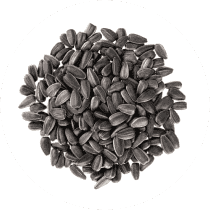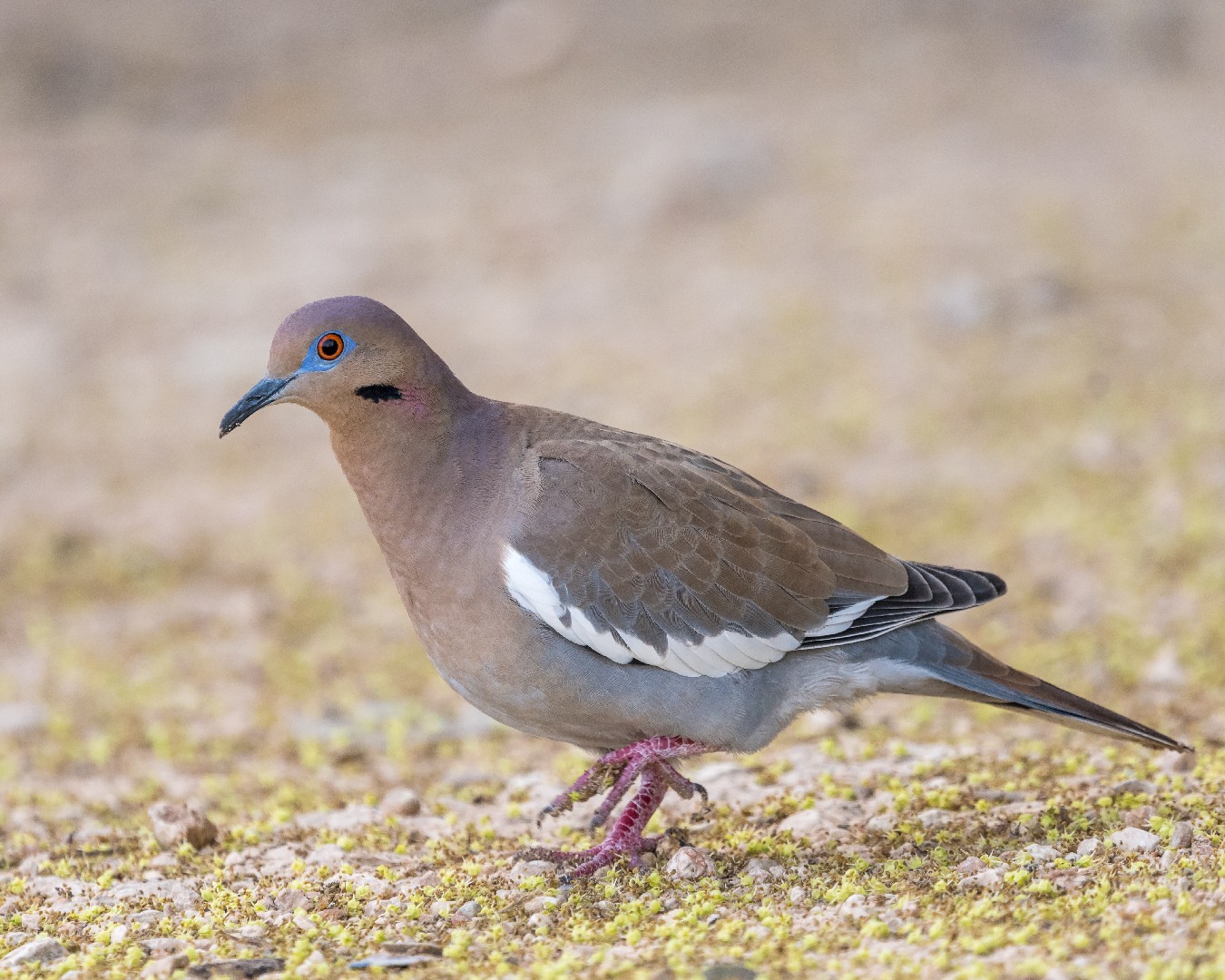White-winged Dove
A species of Zenaida Doves Scientific name : Zenaida asiatica Genus : Zenaida Doves
White-winged Dove, A species of Zenaida Doves
Botanical name: Zenaida asiatica
Genus: Zenaida Doves
Content
Description People often ask General Info
Description
The medium-sized, distinctively patterned white-winged Doves practically live on Saguaro cactus, consuming its nectar, pollen, fruit, and seeds. In fact, they are so dependent on this plant that they match their migration schedule to its fruiting schedule. White-winged Doves were heavily hunted in Texas in the 20th century and their population dropped from 12 million to fewer than 1 million by 1939. Since then proactive hunting management and the species ability to adapt to urban living has helped their numbers rebound.
Size
28-30 cm (11-12 in)
Life Expectancy
25 years
Nest Placement
Tree
Clutch Size
1 - 2 eggs
Incubation Period
1 - 2 broods
Number of Broods
14 - 20 days
Nestling Period
13 - 18 days
Feeding Habits
Primarily vegetarian, white-winged Dove consumes grains, seeds, and agricultural crops such as wheat, sunflower, milo, corn, and safflower. It favors large seeds due to its big bill and leisurely eating pace, and unlike Mourning Doves, it feeds above ground on seedheads, berries, and in feeders. White-winged Dove also ingests grit to grind food in the gizzard and sources calcium from snails and bones. In the Sonoran Desert, it eats saguaro pollen, nectar, fruits, and seeds. It may exhibit collaborative feeding and can impact agriculture as a pest. White-winged Dove doesn’t eat insects during nesting, relying on native seeds for nestling health.
Habitat
White-winged Dove's habitat includes dense thorny forests, streamside woodlands, and cactus-rich deserts, extending to urban and suburban settings in Southern United States. These birds prefer breeding in forest interiors close to feeding areas. Geographically, they range from Oklahoma to Panama and east to Cuba, adapting to both sedentary and migratory lifestyles, with new urban populations emerging due to artificial environments.
Nest Behavior
The male white-winged Dove secures a territory and suggests a general site, with the female finalizing the nest's location. They build it together over a few days. White-winged Dove's nest-building precedes egg-laying and is followed by a shared parental care regime that ensures the survival of their young.
Nest Characteristics
White-winged Dove's nest is typically located on tree branches or crotches under heavy shade in dense woodlands or cities. The construction is a flimsy bowl about 4 inches across, made mostly of twigs, with occasional weeds, grass, moss, leaves, bark, feathers, or pine needles.
Dite type
Granivorous
People often ask
General Info
Feeding Habits
Bird food type

Black Oil Sunflower Seeds

Hulled Sunflower Seeds

Cracked Corn

Millet

Oats

Milo
Bird Feeder Type

Large Hopper

Platform

Ground
Sounds
Song
Recording location: Mexico
Song
Recording location: United States
Behavior
White-winged Dove display a variety of behaviors throughout their daily activities, expertly moving both on the ground and in the air with swift, direct flights. Their interaction with their habitat includes defending territories by vocalizing or displaying wing and tail actions. During breeding season, white-winged Dove engage in elaborate courtship displays that involve aerial flights, body puffing, and tail fanning, with pairs remaining monogamous for the season. A notable behavior is their 'broken wing' act devised to distract predators from their nests. White-winged Dove have a diverse range of predators and respond with evasive maneuvers like retreating swiftly into foliage. These behaviors are essential for their survival and successful reproduction.
Distribution Area
Some populations of white-winged doves are migratory, wintering in Mexico, Central America, and the Caribbean. They are year-round inhabitants in Texas. San Antonio, Texas, had a year-round population of over a million doves in 2001. The white-winged dove inhabits scrub, woodlands, desert, urban, and cultivated areas. They are found increasingly far north, now being visitors to most of the United States, and small parts of southern Canada. In recent years with increasing urbanization and backyard feeding, it has expanded throughout Texas, into Oklahoma, Louisiana and coastal Mississippi. It has also been introduced to Florida. The white-winged dove is expanding outside its historic range into Kansas, Arkansas, Oklahoma, and northern New Mexico. It has been increasingly reported as far north as Canada and Alaska. Within Arizona, populations are effectively divided between agricultural and desert groups. It shares its habitat with that of the mourning dove, but the white winged dove will fly higher. They generally nest at low densities in the desert, but are found in high concentrations near riparian areas. Nesting in riparian zones is referred to as colonial, as opposed to non-colonial behavior in more harsh environments. Such colonies are quite variable, but may be very large. Colony size varies from 5 hectares (0.019 sq mi) to well over a 1,000 hectares (3.9 sq mi). Outside of colonies, nests have a density of less than 10 per hectare, but within colonies there are 500-1,000 nests per hectare. Before the advent of widespread agriculture, they may not have been widely present in what is now the United States – evidenced by a lack of fossil remains and absence from the journals of early European explorers. Their presence in California is likely recent, as a result of the manmade filling of the Salton Sea at the turn of the 20th century. The historical range of the dove closely mirrors that of the saguaro cactus, which it relies on heavily for nectar and fruit where it is found. Modern agriculture has greatly expanded their range by providing a reliable source of forage. The urban heat island effect may also enable them to live further north than they otherwise could. White-winged doves typically migrate into Arizona beginning in March. In California, birds arrive in April and depart by August. Texas migrations run from April through June, peaking in May, and departures run September to October. Migratory groups may include as many as 4,000 individuals, though typically less than 50. A combination of weather, food availability, and hunting pressure can affect the timing of migration. As populations expand in Texas they are becoming less migratory; about 1/3 of birds now overwinter in Texas. Migrations are tracked via traditional banding methods, but the isotope composition of hydrogen and carbon in the feathers can also be used. A 2015 study showed that by tracking the amount of various isotopes, researchers could accurately identify a white-winged doves migration origin. They could also identify if it had been eating from saguaros because of the unique carbon signature that cactus photosynthesis produces. 
Species Status
Not globally threatened.
Scientific Classification
Phylum
Chordates Class
Birds Order
Pigeons and doves Family
Dove Genus
Zenaida Doves Species
White-winged Dove 